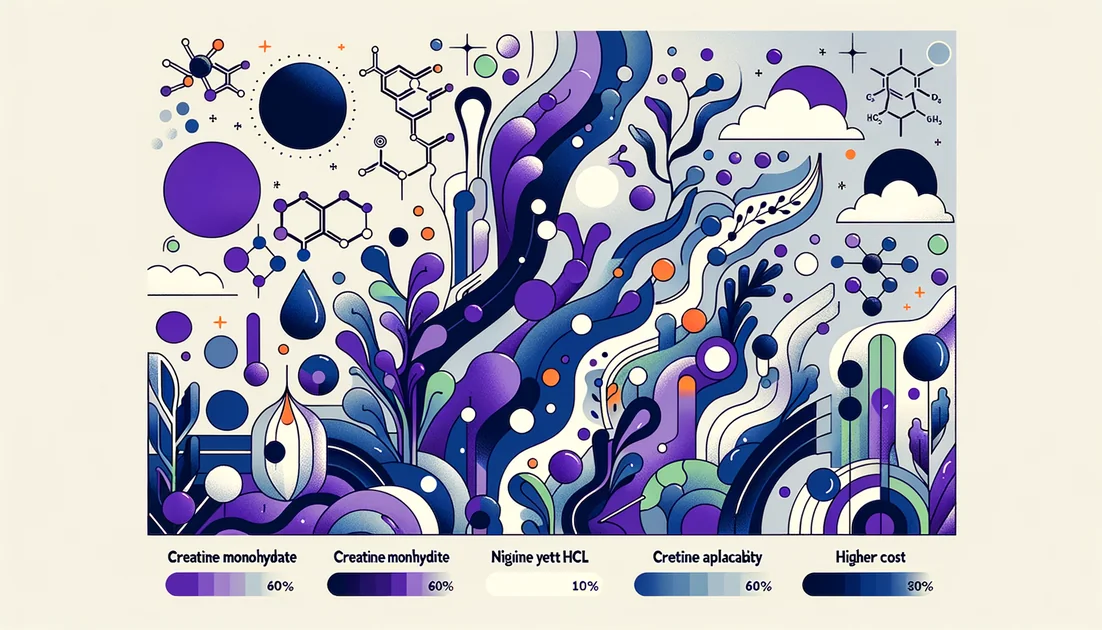
When Smoke Becomes Science: Boswellia's Fast Relief, Ancient Roots, and the New Science of Resolution
The first time frankincense changed a room, it wasn't in a lab—it was in a temple. Sweet smoke curled upward, a message to the heavens. Two thousand years later, the same resin is changing conversations in clinics and research centers: how can an ancient incense ease a swollen knee in days—and what exactly is it doing inside our cells? [1][2]
- Evidence
- Promising
- Immediate Effect
- Yes (mild; day 5–7 reported in knee OA trials using Aflapin/5-Loxin) → 4–12 weeks
- Wears Off
- Likely within 2–4 weeks after stopping (inferred from short trial washouts and symptom patterns; more data needed)
From altars to aching joints
Frankincense is the aromatic resin tapped from Boswellia trees that once bankrolled entire trade routes and royal rituals. Today, health-conscious readers meet it under another name—Boswellia—standardized extracts of the same resin, taken not for ceremony but for comfort. The cultural arc is long: from Roman burials dusted with resin to conceal decay, to modern capsules aimed at quieting the daily grind of joint pain. [1][2] What makes Boswellia interesting isn't just its history—it's the tempo. In osteoarthritis (OA) trials, people didn't wait months to notice something. In several randomized studies of proprietary extracts (5-Loxin and Aflapin/AprèsFlex), improvements in knee pain and function showed up astonishingly fast—sometimes within 5–7 days—and continued to build over weeks. In one 30-day trial, participants on 100 mg/day Aflapin reported less pain by Day 5 and meaningful gains by Day 30; biomarkers linked to cartilage wear and inflammation (like MMP-3 and hs-CRP) also trended down. [4][6][7][8]
The fast-acting surprise
If you've tried supplements that take their time, this is a plot twist. Meta-analyses pooling OA trials suggest Boswellia can reduce pain and stiffness and improve function versus placebo—promising but not definitive, because many studies were small and of variable quality. Still, the overall signal is consistent enough to merit attention, especially when combined with the rapid onset seen in certain formulations. [4][12]
"The resin extracted from the bark of the frankincense tree contains anti-inflammatory substances," says pharmacologist Oliver Werz. "In particular, boswellic acid can reprogramme a central inflammatory enzyme so it produces anti-inflammatory, tissue-healing signals." [11] That quote hints at why speed shows up in the clinical story.
Not just blocking fire—teaching it to go out
Most of us learned a simple story: Boswellia's triterpenes, especially AKBA, "block leukotrienes," the sparkplugs of inflammation. But pharmacokinetics complicated that tale. Blood levels of AKBA after oral dosing are often low—sometimes too low to explain the whole effect—prompting researchers to look for different or additional targets. A 2011 review synthesized this paradox, noting that other boswellic acids reach higher levels and may act on enzymes like microsomal prostaglandin E synthase-1 or cathepsin G. [9][10] The more surprising came from Werz's group: instead of just putting out the fire, certain boswellic acids appear to coach immune enzymes to switch from making inflammatory sparks to generating "specialized pro-resolving mediators"—the body's own cleanup crew. Think of it as moving from fire extinguisher to fire marshal, guiding the crowd safely home. Recent work shows frankincense preparations can push immune cells toward these resolution molecules, especially when the raw materials (like omega-3s) are around. [11][12]
Real people, real conditions
Boswellia's modern journey isn't limited to joints.
In a pilot randomized, placebo-controlled trial in patients receiving brain radiotherapy, high-dose Boswellia (4,200 mg/day) reduced cerebral edema on MRI in a greater proportion of patients versus placebo—an anti-swelling effect that mattered to headaches and function, even if steroids weren't fully replaced. Later observational work is exploring similar use after stereotactic radiosurgery. [14][15]
In asthma, an older double-blind study reported symptom improvements and better lung function with Boswellia gum resin over six weeks; newer combination trials and enhanced-delivery extracts suggest adjunctive benefits alongside standard inhalers, though rigorous confirmation is needed. [16]
In inflammatory gut conditions, the picture is mixed: a trial in collagenous colitis found benefit, while a larger study in Crohn's maintenance did not. Animal models have also produced conflicting results. Translation: promise in pockets, but not a blanket cure. [17]
In the mouth, small randomized trials using frankincense as an adjunct improved gingival inflammation indices, hinting at local anti-inflammatory effects when combined with standard care. [18]
"Our results imply that [a frankincense constituent] may provide a biological basis for deeply rooted cultural and religious traditions," noted the late cannabinoid pioneer Raphael Mechoulam, after identifying incensole acetate's calming effects in mice via a warmth-sensing brain channel. It's a rare moment when a lab bench nods at a liturgy. [13]
The paradox of power and passage
Boswellia's molecules work in dishes and—in certain outcomes—in people. But they don't sail easily through the gut. That's nudged formulators toward smarter delivery systems, such as lecithin-bound "phytosome" extracts that raise blood levels of key acids. Early pharmacokinetic work suggests improved absorption and tissue distribution with these forms, which may help reconcile lab potency with clinical results. Practical translation: take Boswellia with meals (fat helps), and consider standardized or enhanced-bioavailability extracts used in published trials. [9][10]
How people use it today
In OA studies, common daily doses ranged from 100 mg of Aflapin/AprèsFlex to 100–250 mg of 5-Loxin, typically once daily, often showing improvements within 1–2 weeks and more by 4–12 weeks. Traditional Boswellia serrata extracts (not enriched for AKBA) have also been used at 300–500 mg two or three times daily in trials, with a generally good safety profile; national health agencies emphasize that larger, higher-quality studies are still needed across conditions. Choose reputable brands that state boswellic acid content (and AKBA percentage) or use named extracts tied to published research. [6][7][8][12]
The cost behind the comfort
There's another truth woven into frankincense's fragrance: the trees. Ecologists warn that some Boswellia species face steep declines from over-tapping, fire, grazing, and climate pressures; in parts of the Horn of Africa, regeneration has stalled. One researcher put it bluntly: current management is "clearly unsustainable," urging rest periods for trees and better protection for saplings. When you choose Boswellia, look for companies that can trace resin to well-managed sources or support certification and community forestry projects. Relief for your knees shouldn't come at the expense of the next generation of trees—or the harvesters who tend them. [19][20]
Where the trail leads next
The most intriguing future isn't just "less inflammation," but "better resolution"—teaching the immune system to end what it began without collateral damage. That vision aligns with the fast-acting clinical hints in OA, the steroid-sparing potential in neuro-oncology swelling, and the adjunctive roles in airways and oral care. But it also demands stricter trials, standardized extracts, and transparency from soil to capsule. Until then, Boswellia sits in a rare place: a relic of ceremony that's nudging modern medicine to rethink how healing winds down. [4][11][12]
Key takeaways
- •From temples to treatment: frankincense resin (Boswellia) evolved from ritual smoke to standardized extracts aimed at daily joint comfort.
- •Tempo matters: proprietary extracts (5-Loxin, Aflapin/AprèsFlex) showed knee OA improvements within 5–7 days in trials, with biomarker shifts alongside symptom relief.
- •Mechanistic twist: boswellic acids nudge inflammatory enzymes toward pro-resolution, tissue-healing signals rather than blunt suppression.
- •How to take: typical OA study dosing—Aflapin/AprèsFlex 100 mg once daily; 5-Loxin 100–250 mg daily; traditional extracts 300–500 mg, 2–3×/day; consistency beats clock time.
- •Absorption tip: take with meals; dietary fat helps these resin acids cross the gut's 'customs.'
- •Use wisely: generally well tolerated (occasional mild GI upset); best as an adjunct to standard care, with clinician guidance for special cases (e.g., post-radiation swelling, selected asthma).
You might also like
Explore more of our evidence-led investigations, comparisons, and guides across every article style.

GNC (General Nutrition Centers) — Supplements Division
GNC's Supplement Paradox: Pockets of elite sports testing amid uneven transparency and premium pricing

Creatine Monohydrate (CM) vs Creatine Hydrochloride (Cr-HCl)
For most people, choose Creatine Monohydrate for proven results, simple dosing, and best value. Consider Creatine HCL only if you consistently get GI upset from CM and are willing to pay more; it hasn't shown better outcomes in trials. [1][2][4][5]

Best for longevity
Selenium 200 mcg + CoQ10 200 mg daily (4 yrs) — mortality signal [2]

Mitopure (Urolithin A)
You're halfway up the stairs when your legs file a quiet protest. Not pain—just a sense that the battery is running low. What if the answer isn't "more charge," but sending in a cleanup crew?

The Immune Vision Duo: Unlock What's Stuck
Context-dependent synergy: proven in deficiency settings (especially for persistent diarrhea and pregnancy night blindness), but additive or null elsewhere.

Tocotrienols
The stealthier cousins of vitamin E—built with springy tails that move differently in cell membranes and behave differently in your body.
